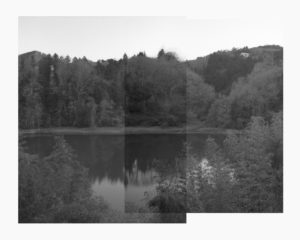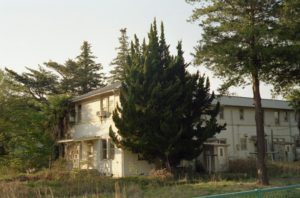
New photo series Eden
The American novelist Mark Twain, best known for his The Adventures of Tom Sawyer, also wrote some short stories called The Diaries of Adam and Eve. As I read them, I saw the Garden of Eden, from which Adam and Eve were banished for eating the forbidden fruit, not as a Biblical reference but as something that can stand for Planet Earth and our natural environment today. What do we have here – a utopia or a dystopia? In ancient Japan, people believed that the gods dwelt in all things. Yet there are places where, although trees grow there in abundance, large quantities of waste are buried in the ground and attempts to restore the land are presently under way. I don’t suppose that this series will lead to some sort of solution to this problem. One thing we can say is that even seemingly untouched natural landscapes have been altered by human hand. Aren’t these altered landscapes just as good as natural ones?
Translated by Michael Normoyle and Yoshiko Furuhashi at M&Y Translations (Rotherham, UK).
Additional write: This series is an ongoing project, which started in November 2023. This photo series also includes photos taken earlier (from 2014). And some of the work includes C2C client work.

From the series Eden. Upper-right: Green Love Letter, created by sculptor Masayuki “Masa-san” Takahashi in 1989 on a mountain beside Sagami River (Lake Sagami).
写真シリーズ「Eden」について: 『トム・ソーヤーの冒険』で知られるアメリカの小説家マーク・トウェインは、短編小説『アダムとイヴの日記』も書いています。私はこの小説を読んで、禁断の果実を食べたためにアダムとイヴが追放されてしまう「エデンの園」を聖書の引用としてではなく、地球という惑星と現代の自然環境の象徴として捉えてみました。ここはユートピアなのか、それともディストピアなのか。古代日本では万物に神が宿ると信じられていました。しかし木々が生い茂る地中に大量の廃棄物が埋もれ、現在その土地の再生が試みられている場所もあります。このシリーズで何らかの解を導き出そうとは思っていません。ただ言えるのは、一見手つかずの自然にも人の手が入っていて、それも等しい存在なのではないかということです。
*その他のシリーズのアーティスト・ステートメント/ブリーフ・イントロダクションは、このウェブサイトのメインメニュー [Photo Projects]、またはこのNoteページのサブメニュー [photo projects] に記載しています。いくつかの英文ステートメントはより正確なものに今後置き換えていく予定です。









